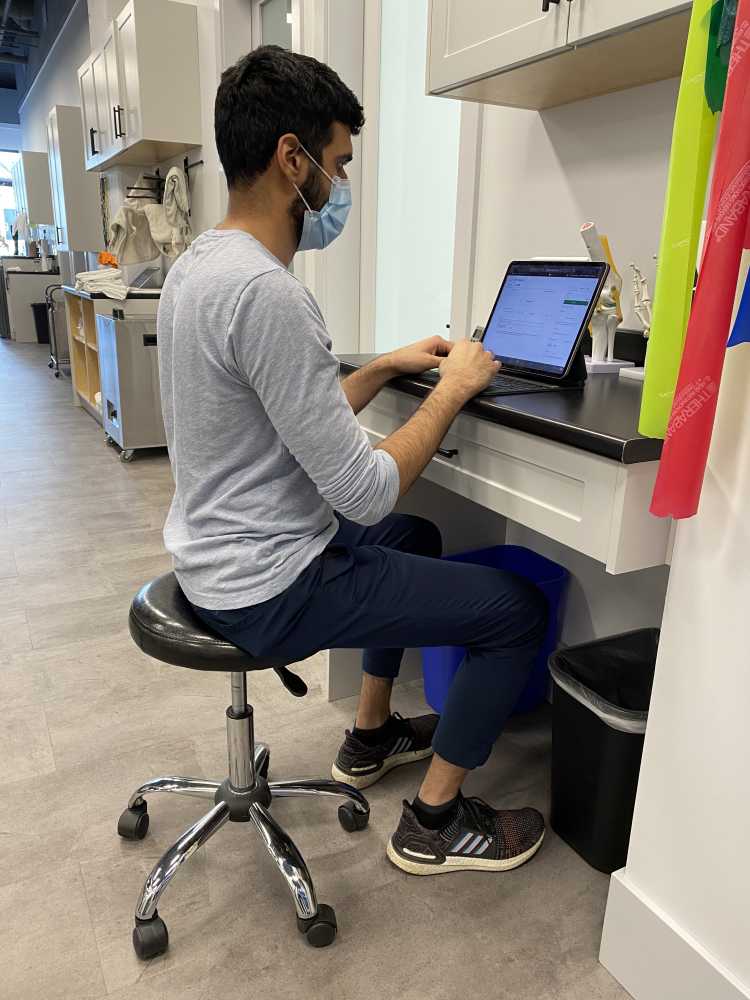What is Posture
What is Posture and what is the difference between good and bad posture?


It's a word we hear bandied around a lot. We get told that we have 'good' posture or 'bad' posture, and that it affects our body, mood and can increase or help decrease pain. But what exactly IS posture? And why should we care?
Posture is the position in which you hold your body upright against gravity while standing, sitting or laying down. Good posture allows the body to stand, move, sit and lie in positions where the least strain is placed on supporting muscles and ligaments. Good posture helps us move and function with ease, and hopefully without aches and pains!
We all want good posture... but it can be incredibly difficult to achieve (a definite case of easier said than done!). If you have poor posture (and especially if you've had it for years!) acquiring good posture involves not only learning new movements and positions, but acknowledging that there is not one correct (good) posture. More importantly, good posture is achieved by having a variety of postural motor patterns to dip into - knowing that we have multiple different ways we can sit, stand and lay that will all achieve the same thing! It's a lot of learning, but it definitely IS possible!
How to Correct Your Posture
Just knowing how to correct your posture is not enough to achieve a change in your actual habit. Our body uses learned motor patterns to perform everyday activities. When we sit, stand, walk or move - our body follows previously learned motor patterns which have formed habits that are hard to break. Firstly you'll need to become aware of the postures you're using that are causing unnecessary strain, learn new postures, practice them and then repeat.
Step 1: Posture Assessment
The first step to discovering how to correct your posture is to have your posture assessed. Your physiotherapist is an expert at posture assessment, and will be able to break down the areas in which you can improve. In order to achieve good posture you'll need to have:
Good Spatial Awareness. You'll need to know where your body (and body parts) are in space. If you are unsure "how you should feel" with good posture, what hope have you got for achieving it? This is where your physiotherapist can provide you with verbal and visual feedback. They'll then provide cues to assist your learning and help you achieve a variety of postures. Ask them to write these down for you - they're great to come back to time and again!
Normal Joint Range of Motion. If you have stiff joints they will need to be exposed to greater movement in order to allow you to achieve good posture and alignment. There are lots of amazing ways you can help improve your movement, including simple exercises you can do at home!
Normal Muscle Length. If your muscles are too tight you won't be able to attain a normal posture. You may need to work out why your muscles are tight (and again find exercises to help improve this!).
Good Muscle Strength. Your muscles need to be able to pull you into the correct posture. Should we mention Pilates one more time? ;)
Excellent Muscle Endurance. Your muscles need to be able to work for hours on end. Poor endurance is a major factor in habitual poor posture.
Finally - Normal Nerve Extensibility. Your neural tissue needs enough length to allow for normal posture.
There's a big to-do list here which can certainly feel a little overwhelming, but remember it's one step at a time!
Step 2: Formulate a Plan
Once you have been assessed where your posture can be improved, your physiotherapist will help you to formulate a plan. They'll provide you with hands-on treatment, posture correction exercises and helpful home products for you to achieve great posture again! And… you're never too old to start! It just gets harder to change your old ways, so why not start now! After all, today is the youngest you'll ever be!
If you're interested in posture correction advice, why not get in touch! Call us at 604-455-7772 or click here to book an appointment. Your back, neck, shoulders and will thank you (we promise!).
Author: Sukhi GrewalDate Published: March 11th, 2021Category: